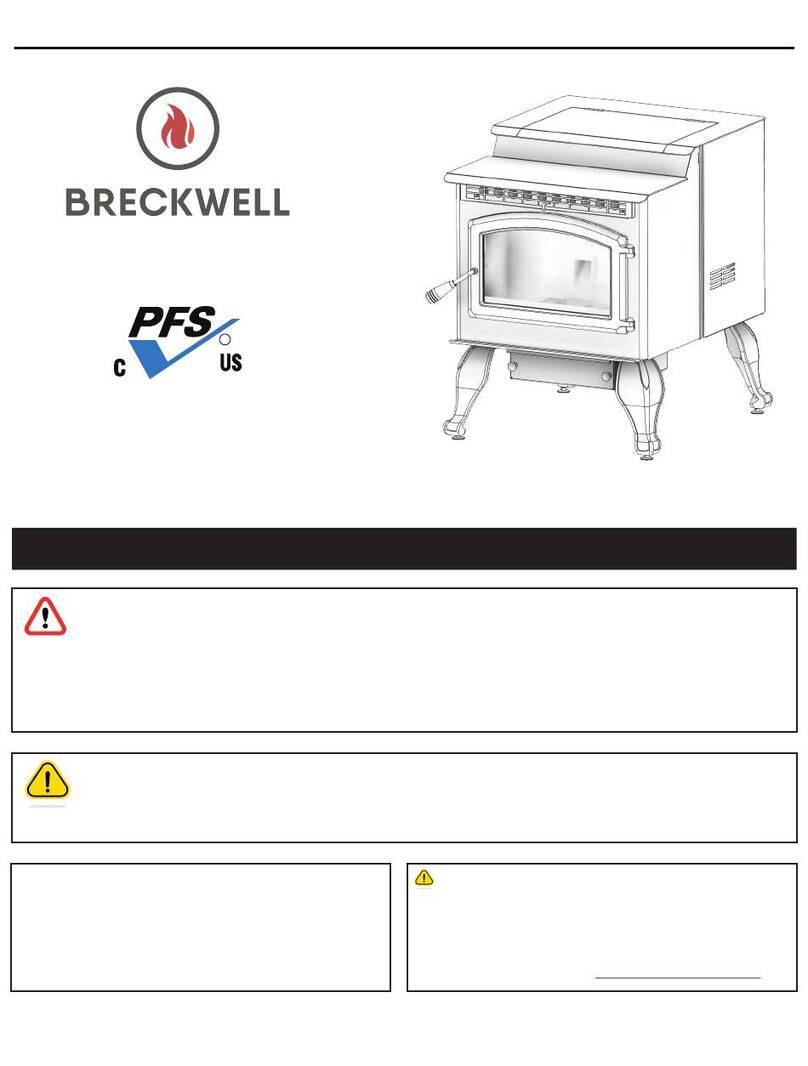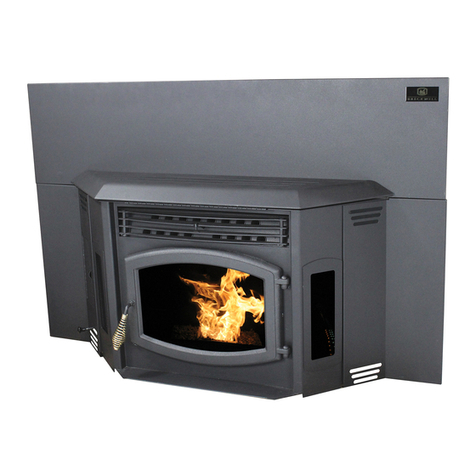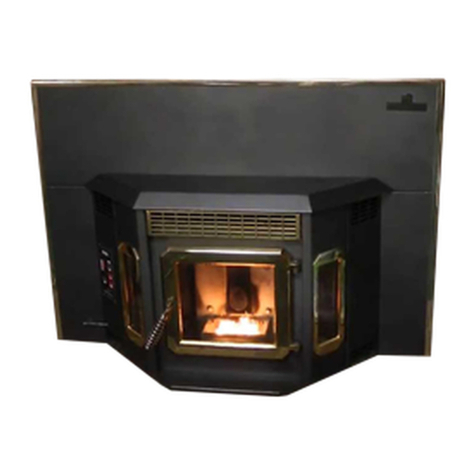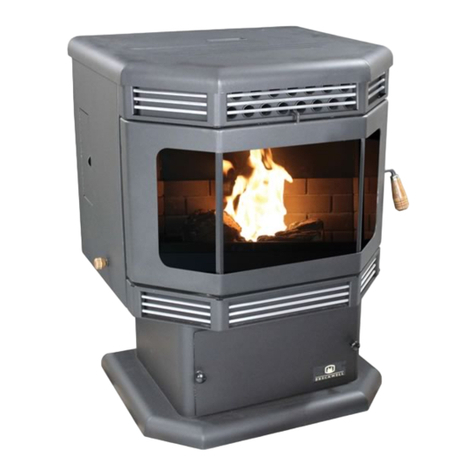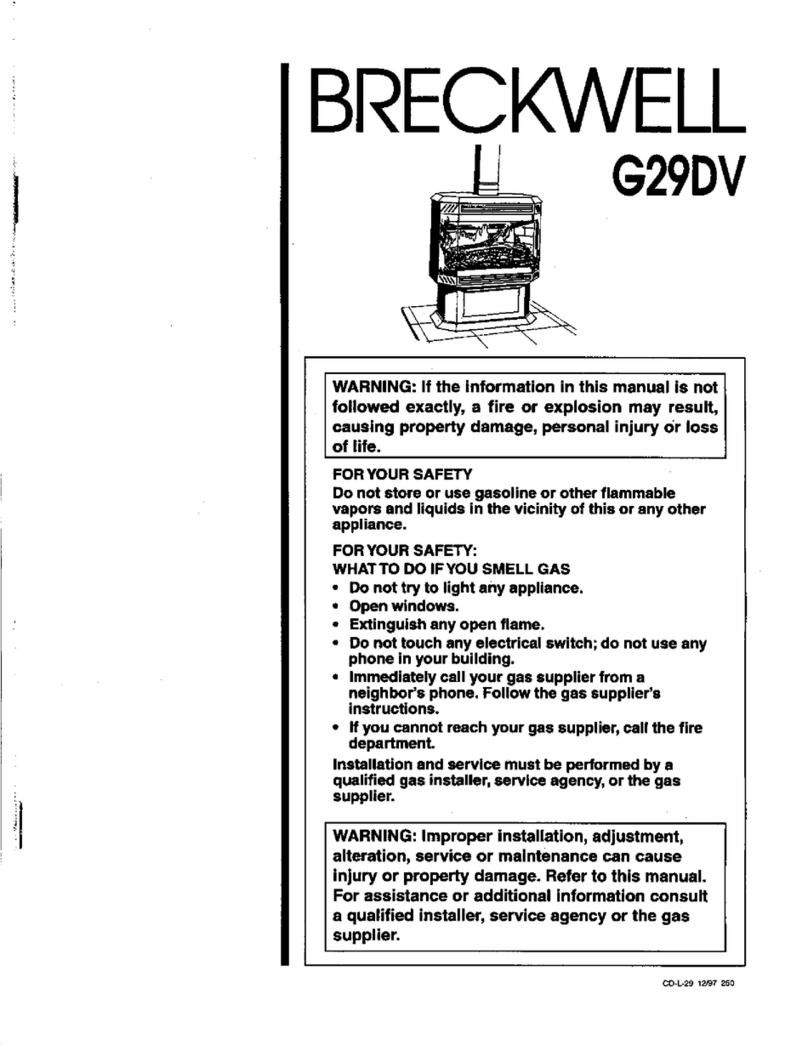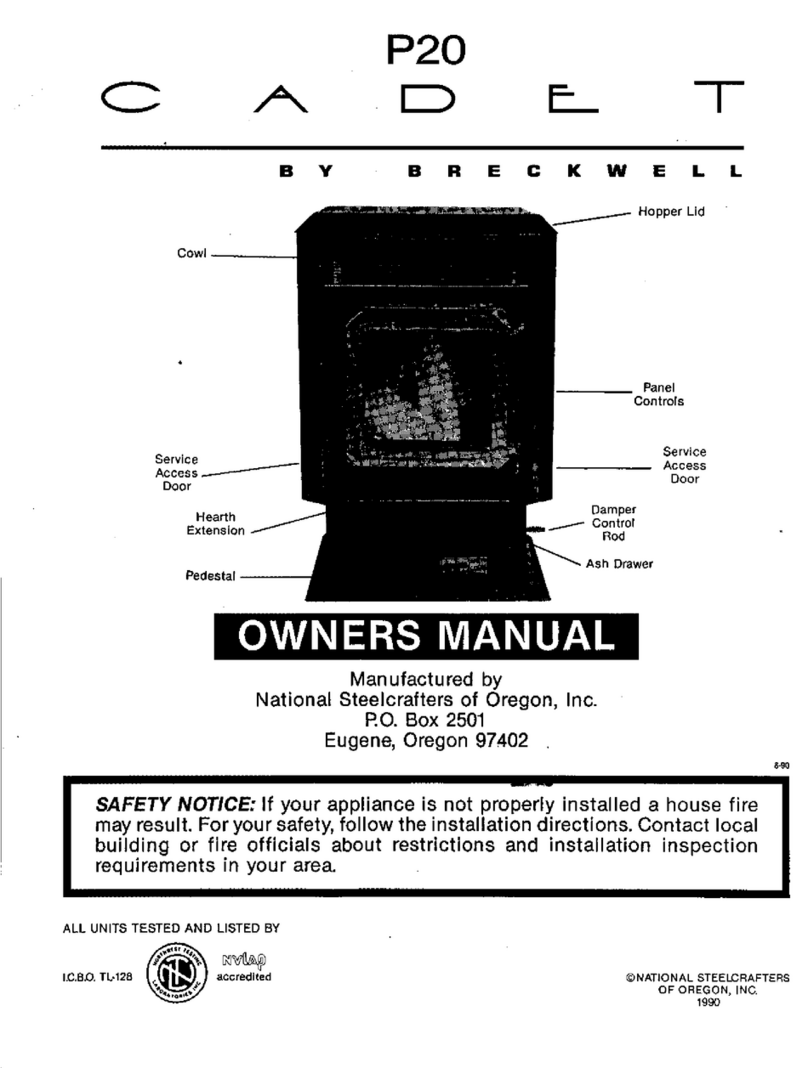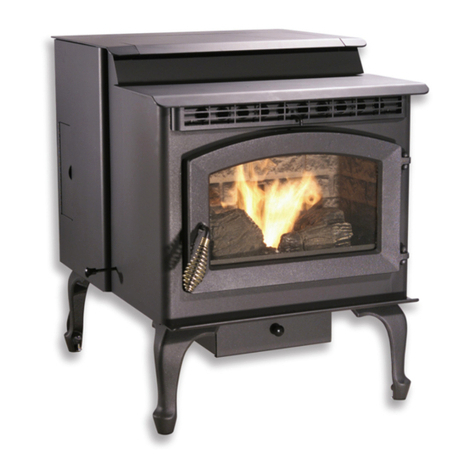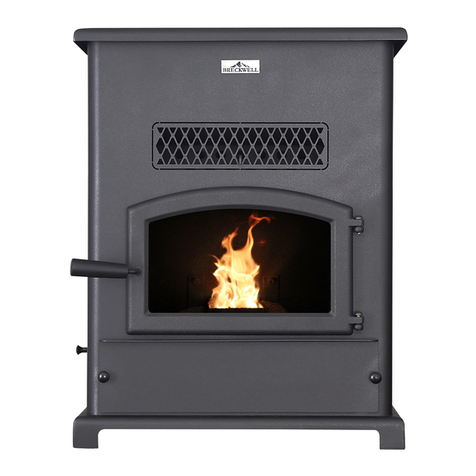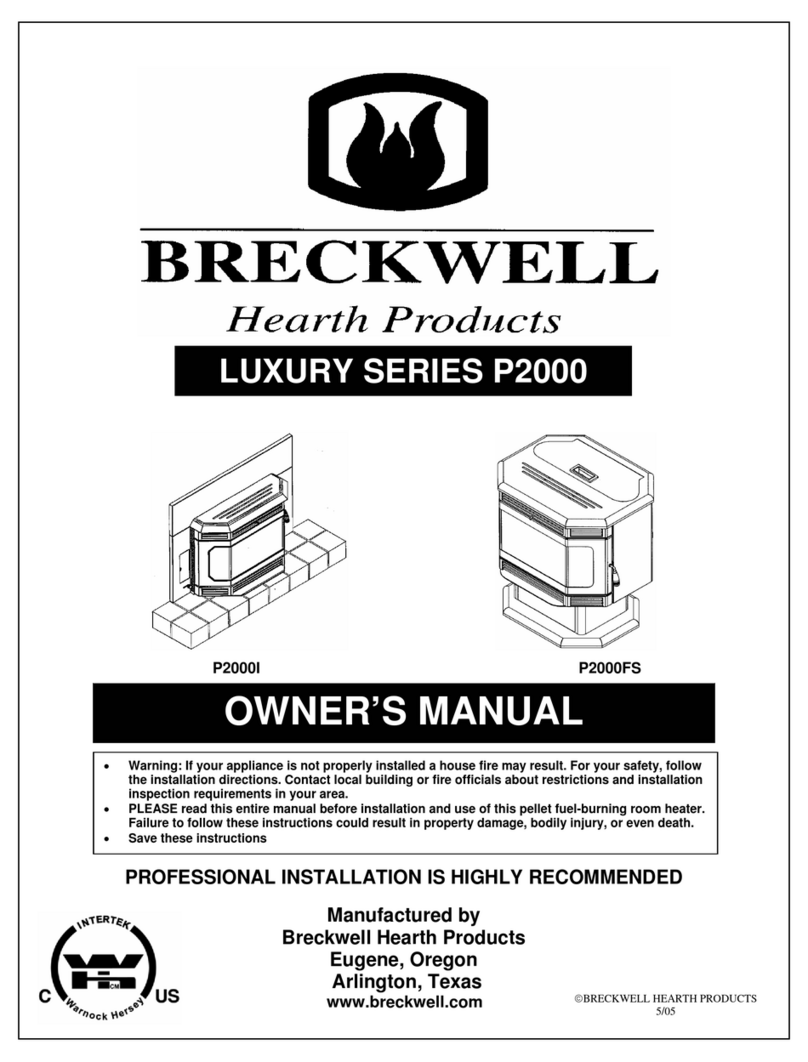
8
© 2022 Breckwell Hearth
INSTALLATION
OPTION: To achieve a center vertical installation a 45º
elbow and a clean-out tee can be used to offset the pipe
from the exhaust outlet to the rear center of the stove.
OPTION: Install PL-Vent elbow in place of clean-out tee.
Locate stove. Drop plumb bob to center of tee outlet, mark
point on ceiling. Install ceiling support and PL-Vent pipe per
PL-Vent manufacturer’s instructions.
1. Always maintain 3” (77 mm) clearance from combustible
materials. When passing through additional oors or
ceilings, always install restop spacer.
2. After lining up for hole in roof, cut either a round
or square hole in roof, always 3” (77 mm) larger all
the way around pipe. Install upper edge and sides of
ashing under roong materials, nail to the roof along
upper edge. Do not nail lower edge. Seal nail heads
with non-hardening waterproof mastic.
3. Apply non-hardening, waterproof mastic where the
storm collar will meet the vent and ashing. Slide storm
collar down until it sits on the ashing. Seal and install
cap.
VERTICALLY INTO EXISTING CHIMNEY SYSTEM
PELLET VENT TO
EY ADAPTER UNIVERSAL
EXISTING
CHIMNEY
SYSTEM
PELLET
VENT
NOTE:
THIS METHOD
EXISTING
CHIMNEY
SYSTEM
Adapters are available to adapt from 3” (77 mm) PL-Vent
to 6” or 8” (153 mm or 204 mm) Class-A chimney. As an
alternative, 3” or 4” (77 mm or 102 mm) PL-Vent can be run
inside existing chimney to termination. This is the preferred
method. Follow guidelines for equivalent vent length.
VERTICALLY INTO EXISTING MASONRY
FIREPLACE
1. Have the masonry chimney inspected by a qualied
chimney sweep or installer to determine its structural
condition.
2. You will need a pipe length equal to the chimney height
from the hearth. If outside combustion air is to be used,
you will need a pipe length equal to the chimney height
plus 18” (458 mm).
3. Install a blanking plate and the chimney pipe, and if
used the outside air pipe, as shown in.
4. Attach the PL-Vent adapter, a section of pipe and clean
out tee, making sure the clean out tee is centered in
the chimney ue area. Use RTV, metallic tape, and
a minImum of three self-taping screws at all joint
connections to ensure a tight seal.
5. Position the stove, adhering to the clearances in.
6. Measure and build chimney top plate. Cut out holes for
chimney pipe, and if used the outside air pipe. Install
and seal with non-hardening mastic to prevent water
leakage. Install vent cap.
HEARTH
(SEAL TO CHIMNEY TOP
WITH NON-HARDENING
MASTIC)
EXTENSION TO CHIMNEY TOP
REQUIRED.
3 OR 4 INCH STAINLESS STEEL
SINGLE WALL PIPE OR FLEX PIPE.
BLANKING PLATE (SEAL WITH
NON-HARDENING MASTIC).
3 OR 4 INCH STAINLESS STEEL
FLEX PIPE.
OPTIONAL OUTSIDE AIR
CLEAN-OUT-TEE
OR 90 DEGREE ELBOW
TO
APPLIANCE
6”(153 mm)
FROM STOVE
TO END OF
HEARTH
NOTE:
FOLLOW METAL
CHIMNEY
INSTALLATION
INSTRUCTIONS
6”(153 mm)
3”(77 mm)
INSTALLATION THROUGH SIDE OF MASONRY
CHIMNEY
1. Position the stove, adhering to the clearances. Mark
the center of the hole where the pipe is to pierce the
masonry chimney.
2. It will be necessary to break out the masonry around
the location of the pipe center mark. Use a 4” (102
mm) diameter hole for 3” (77 mm) pipe and 5” (127
mm) diameter hole for 4” (102 mm) pipe.
3. Measure and build chimney top plate. Cut out holes for
chimney pipe, and if used the outside air pipe.
4. Install the tee on the bottom of the vertical pipe system
and lower it down the chimney until the center branch
of the tee is level with the center of the hole in the
masonry, as shown.
5. Install and seal the top plate from step 3 with non-
hardening mastic. Slip the storm collar over the pipe,
and while holding the pipe at the proper elevation,
afx the collar with a mini mum of three 1/4” (7 mm)
stainless steel sheet metal screws. Seal all joints and
seams around the collar.

